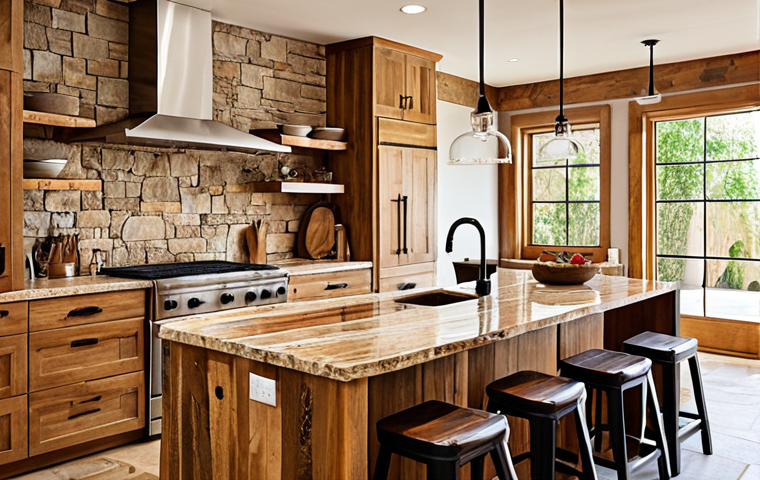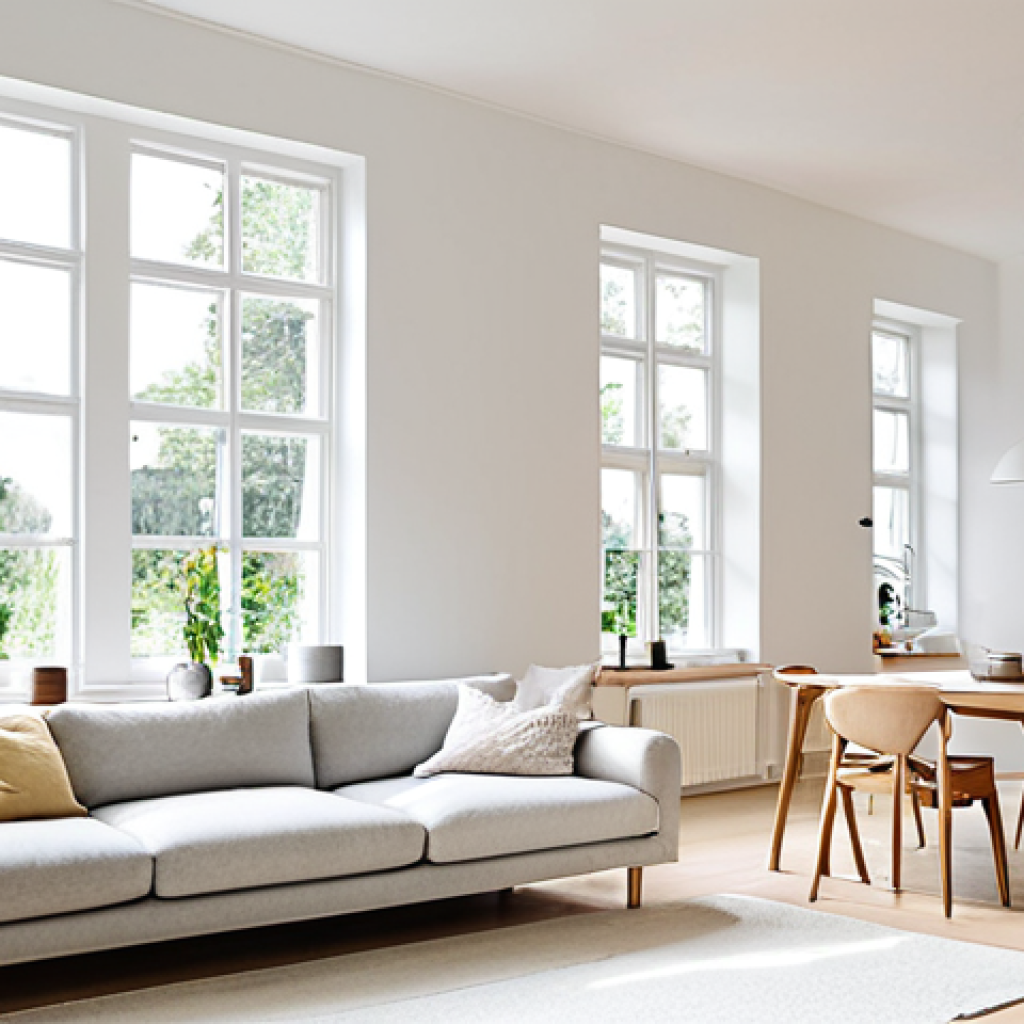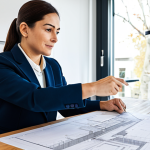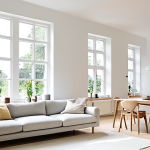Architecture isn’t just about blueprints and building codes; it’s a visual symphony that shapes our everyday experiences. I’ve always been fascinated by how a building can evoke emotions, tell a story, and even influence how we interact with the space around us.
The aesthetics of a structure, from its façade to the interior design, play a critical role in our perception and appreciation of it. Think about grand cathedrals with soaring arches, or sleek modern homes with minimalist décor – each one communicates a unique message.
Modern trends lean towards sustainable designs and integrating natural elements. Experts are even predicting a rise in personalized, AI-assisted architectural designs.
Let’s dive deeper into this fascinating topic in the piece below!
The Psychology of Space: How Architecture Affects Our Mood

The Impact of Color and Light
Have you ever walked into a room and immediately felt a certain way? That’s often the result of carefully chosen colors and lighting. Bright, airy spaces tend to evoke feelings of happiness and openness, while darker, more enclosed spaces can feel cozy or even somber. I remember visiting a Scandinavian-inspired home with white walls and large windows, and I couldn’t help but feel a sense of calm and tranquility. It’s amazing how much these elements influence our emotional state.
Spatial Arrangement and Social Interaction
The way a space is arranged can also impact how we interact with others. Open floor plans encourage socializing and communication, while segmented spaces can promote privacy and focus. Think about the layout of your favorite coffee shop – chances are, it’s designed to facilitate both individual work and group gatherings. I once worked in an office with a completely open layout, and while it fostered collaboration, it was sometimes hard to concentrate. Striking the right balance is key.
Personal Space and Comfort
Everyone has a different sense of personal space. Architects need to be mindful of this when designing buildings, ensuring that there are areas for both interaction and retreat. Overcrowded spaces can lead to stress and discomfort, while overly spacious areas can feel isolating. I recall visiting a museum where the exhibits were so close together that it was difficult to appreciate the artwork. Finding the right balance between openness and intimacy is crucial for creating a comfortable and welcoming environment.
The Role of Materials: Texture, Tactility, and Memory
The Power of Touch
We often think about architecture in terms of visuals, but the tactile experience is just as important. The materials used in a building can evoke memories and emotions, and the textures we feel under our feet or on our hands can be incredibly powerful. Think about the smooth coolness of marble, the rustic warmth of wood, or the industrial edge of concrete. Each material has its own unique character and can contribute to the overall atmosphere of a space. I recently renovated my kitchen and chose natural stone countertops – the tactile experience alone makes me happy every time I use them.
Material Authenticity and Sustainability
There’s a growing trend towards using authentic and sustainable materials in architecture. People are becoming more aware of the environmental impact of construction and are seeking out buildings that are both beautiful and eco-friendly. Using reclaimed wood, recycled metal, and locally sourced stone not only reduces waste but also adds character and history to a space. I visited a home built with reclaimed materials, and it was truly inspiring to see how these materials were given a new life.
The Evocative Nature of Materials
Materials can evoke memories and associations. The smell of pine wood might remind you of a cozy cabin, while the sight of brick might conjure images of historic buildings. Architects can use this to their advantage, choosing materials that resonate with the building’s purpose and the people who will use it. I remember visiting a library that was built with exposed brick and wood, and it immediately created a sense of warmth and intellectual stimulation. It’s amazing how materials can transport us to another time and place.
Form Follows Function: Balancing Aesthetics and Utility
The Practicality of Design
The old adage “form follows function” is a cornerstone of architectural design. While aesthetics are important, a building must also be practical and serve its intended purpose. A beautiful building that is difficult to navigate or inefficient to use is ultimately a failure. Architects must carefully consider the needs of the occupants and design spaces that are both visually appealing and highly functional. I once visited a museum where the exhibits were beautifully curated, but the layout was so confusing that it detracted from the overall experience. It’s a delicate balancing act.
The Interplay of Form and Function
The best architecture seamlessly integrates form and function, creating spaces that are both beautiful and practical. A well-designed building should not only look good but also enhance the user experience. Consider the design of a modern kitchen – it should be aesthetically pleasing, but it should also be easy to cook and clean in. It’s about finding the perfect balance between style and substance. I recently remodeled my bathroom, and I made sure to choose fixtures and materials that were both beautiful and easy to maintain.
Adaptability and Future-Proofing
Architecture should also be adaptable and able to accommodate future needs. Buildings should be designed with flexibility in mind, allowing them to be easily modified or repurposed as circumstances change. This is especially important in a rapidly evolving world. I’ve seen buildings that were designed for a specific purpose become obsolete because they couldn’t adapt to new technologies or changing demographics. Future-proofing is a key aspect of sustainable and responsible design.
Architectural Styles: A Reflection of Culture and Time
The Story Behind Each Style
From the grandeur of Gothic cathedrals to the sleek lines of modern skyscrapers, architectural styles reflect the culture, technology, and values of their time. Each style tells a story about the society that created it. Gothic architecture, for example, was a symbol of religious devotion and the power of the church, while modern architecture embraced innovation and functionality. I’ve always been fascinated by how architecture can be a window into the past.
Evolution and Innovation
Architectural styles are constantly evolving and adapting to new technologies and cultural trends. What was once considered cutting-edge can become outdated over time, and new styles emerge to challenge the status quo. The rise of sustainable architecture, for example, is a response to growing concerns about the environment. I’ve seen firsthand how architects are pushing the boundaries of design to create buildings that are both beautiful and environmentally responsible.
Regional Variations and Local Influences
Architecture is also influenced by regional variations and local conditions. Buildings in different parts of the world reflect the climate, available materials, and cultural traditions of their region. A traditional Japanese home, for example, is designed to be lightweight and flexible to withstand earthquakes, while a Mediterranean villa is designed to be cool and airy in a hot climate. These regional variations add to the richness and diversity of architectural styles.
The Impact of Technology: BIM, 3D Printing, and Smart Buildings
The Digital Revolution in Architecture
Technology is revolutionizing the field of architecture, from the design process to the construction phase. Building Information Modeling (BIM) allows architects to create detailed digital models of buildings, which can be used to simulate performance and identify potential problems before construction even begins. 3D printing is also being used to create building components and even entire structures. I’ve been amazed by the advancements in technology and how they are transforming the way buildings are designed and built.
Smart Buildings and the Internet of Things
Smart buildings are equipped with sensors and automated systems that monitor and control various aspects of the building, such as lighting, temperature, and security. The Internet of Things (IoT) allows these systems to communicate with each other and with the building’s occupants, creating a more comfortable, efficient, and secure environment. I recently visited a smart office building, and it was incredible to see how technology was used to optimize energy consumption and improve the overall work experience.
Challenges and Opportunities
While technology offers many opportunities for architects, it also presents some challenges. Keeping up with the latest advancements can be difficult, and there is a risk of becoming too reliant on technology and losing sight of the human element in design. However, the potential benefits of technology are enormous, and architects who embrace it will be well-positioned to create innovative and sustainable buildings in the future.
The Future of Architecture: Sustainability, Resilience, and Inclusivity
Designing for a Changing World
The future of architecture will be shaped by the need to create sustainable, resilient, and inclusive buildings that can adapt to a changing world. Sustainability will be a key focus, with architects designing buildings that minimize their environmental impact and use renewable energy sources. Resilience will also be important, as buildings need to be able to withstand natural disasters and other challenges. I believe that architecture has a crucial role to play in creating a more sustainable and equitable future.
The Rise of Biophilic Design
Biophilic design seeks to connect people with nature by incorporating natural elements into the built environment. This can include using natural materials, maximizing natural light, and creating green spaces within buildings. Studies have shown that biophilic design can improve mood, reduce stress, and enhance productivity. I’ve always felt more comfortable and inspired in spaces that incorporate natural elements. It’s a trend I’m excited to see grow.
Accessibility and Universal Design
Architecture should be accessible to everyone, regardless of their age, ability, or background. Universal design principles aim to create buildings that are usable by all people, to the greatest extent possible, without the need for adaptation or specialized design. This includes features such as ramps, elevators, and accessible restrooms. I believe that architecture should be inclusive and welcoming to all members of society.
Preserving the Past: The Importance of Architectural Conservation
Protecting Our Heritage
Architectural conservation is the practice of preserving and restoring historic buildings and structures. It is essential for protecting our cultural heritage and ensuring that future generations can appreciate the architecture of the past. Conservation efforts can range from simple maintenance and repairs to extensive renovations and restorations. I believe that it is our responsibility to preserve these architectural treasures for posterity.
Challenges of Conservation
Architectural conservation can be challenging, as it often involves working with delicate and fragile materials. It requires specialized knowledge and skills, as well as a deep understanding of the building’s history and construction techniques. Conservationists must also balance the need to preserve the building’s original character with the need to make it functional and safe for modern use. I’ve seen firsthand the dedication and expertise that goes into preserving historic buildings.
The Benefits of Conservation
Architectural conservation offers many benefits, including preserving our cultural heritage, promoting tourism, and revitalizing communities. Historic buildings can be a source of pride for local residents and can attract visitors from around the world. Conservation efforts can also create jobs and stimulate economic growth. I believe that investing in architectural conservation is a wise investment in our future.
| Architectural Element | Psychological Effect | Example |
|---|---|---|
| Color | Influences mood and emotion | Blue walls can promote calmness, while red walls can evoke energy. |
| Lighting | Affects perception and atmosphere | Natural light can increase productivity, while dim lighting can create a sense of intimacy. |
| Spatial Arrangement | Impacts social interaction and privacy | Open floor plans encourage socializing, while enclosed spaces provide privacy. |
| Materials | Evokes memories and associations | Wood can create a sense of warmth, while metal can convey a sense of modernity. |
| Form | Balances aesthetics and utility | A well-designed building should be both beautiful and functional. |
In Conclusion
Architecture is so much more than just buildings; it’s an art form that profoundly impacts our daily lives. By understanding the psychological effects of space, materials, and design, we can create environments that enhance our well-being and foster a sense of connection. As we move forward, let’s strive to create spaces that are not only beautiful but also sustainable, inclusive, and deeply human.
Good to Know Info
1. Check Local Building Codes: Before starting any renovation, always check your local building codes and regulations to ensure compliance.
2. Consider Natural Light Orientation: When designing a new space, think about how sunlight will enter the room at different times of the day.
3. Explore Sustainable Material Options: Look into eco-friendly materials like bamboo flooring, recycled glass countertops, or reclaimed wood.
4. Use Color Psychology Wisely: Choose colors that evoke the desired mood for each room – calming blues for bedrooms, energetic yellows for kitchens.
5. Consult with Professionals: Don’t hesitate to consult with architects, interior designers, and contractors to bring your vision to life.
Key Takeaways
Architecture profoundly affects our mood through color, light, and spatial arrangement.
Materials evoke memories and emotions, contributing to a space’s atmosphere.
Balancing aesthetics and utility is crucial for functional and visually appealing design.
Architectural styles reflect culture, technology, and values of different eras.
Technology enhances design but must complement the human element.
Future architecture must prioritize sustainability, resilience, and inclusivity.
Conservation protects our architectural heritage, linking the past with the future.
Frequently Asked Questions (FAQ) 📖
Q: What impact does architectural aesthetics have on people’s daily lives and experiences?
A: From my perspective, architectural aesthetics do more than just look pretty. They deeply influence our mood and behavior. A well-designed building can inspire creativity, promote relaxation, or even foster a sense of community.
I recall visiting a museum with an incredible open layout and natural light. It completely transformed my experience compared to stuffy, poorly lit spaces.
Aesthetics shape everything.
Q: Considering the current architectural trends, how important is sustainability in modern building design?
A: Sustainability isn’t just a trend; it’s an absolute necessity. I’ve noticed a real shift in focus toward eco-friendly materials, energy-efficient designs, and minimizing environmental impact.
My cousin, who works in construction, tells me about all the new green building standards they’re implementing. I think consumers will demand more sustainable architecture going forward as well.
Q: What is meant by “
A: I-assisted” architectural design and how do you see this impacting the future of architecture? A3: AI-assisted design is really fascinating. It’s about using artificial intelligence to help architects generate designs, optimize layouts, and even predict how people will interact with a space.
I can imagine AI helping with repetitive tasks or analyzing tons of data to create more efficient and personalized building designs. It’s not about replacing architects, but giving them tools to push the boundaries of what’s possible.
I’ve read articles about programs that simulate how sunlight affects a building throughout the year, which could drastically change building design for optimal energy efficiency, and I think that is only the beginning of the benefits AI can bring to architecture.
📚 References
Wikipedia Encyclopedia
구글 검색 결과
구글 검색 결과
구글 검색 결과
구글 검색 결과
구글 검색 결과




